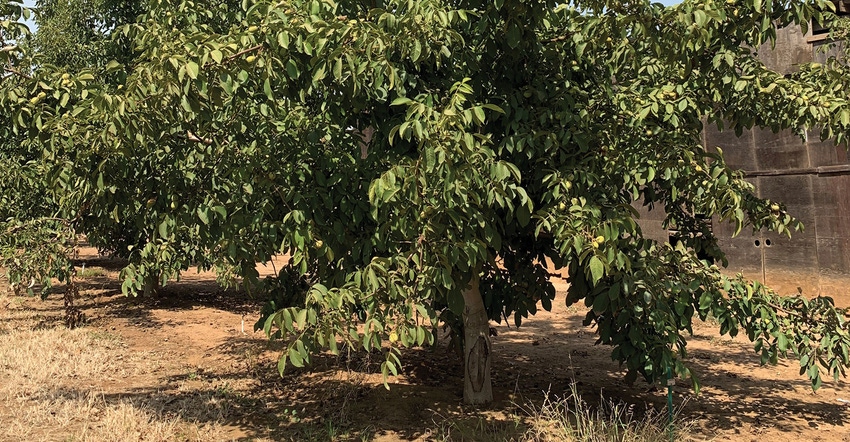
The walnut world got wowed earlier this year with the University of California, Davis introduction of the Wolfskill variety, designed with growers in mind to improve field performance with an earlier harvest and a greater yield.
“The California Walnut Board has partnered with UC Davis for over half a century on production research,” said CWB Technical Director Joshua Rahme. “We’ve provided funding and strategic direction for walnut production and post-harvest research designed to help improve orchard crop health, yield, and sustainability, all efforts that ultimately benefit growers.”
Adds CWB Research Director Joe Grant: "There have been dramatic changes in the conditions under which California walnuts are grown --- warmer winters, fewer foggy days to provide chilling --- and we're concerned about those changes. The variety breeding work that CWB supports includes efforts to develop new varieties requiring less chilling."
Although still early in the cycle, walnut breeder Patrick Brown says response to the Wolfskill introduction can be measured by the fact that nursery demand exceeded supply for this winter. “Every last bit of it was snapped up and there is increasing demand for summer budwood.
“Consumers may not notice much of a difference between Wolfskill and other varieties, but growers will be happier with an earlier harvest. If you’re growing Wolfskill and Chandler, you can spread your harvest out a bit. Plus growers will be happy with the color and the yield.”
Asked if the Walnut Improvement Program was currently working on any similar varieties for future introduction, Brown said: “There’s always new stuff coming down with a couple of promising undertakings sort of vying for the next potential release.”
He cited #725, a late leafing variety (like Chandler) with large kernels. “What really distinguishes this one and gets researchers excited is the outstanding ease of removal with a high percentage of halves. That should be a really good selling point. It’s a shorter season variety that leafs out with Chandler. You might expect the yield to be a bit lower, but we haven’t seen that yet.”
Another prospect
Another promising prospect is a full sibling of Wolfskill. “It’s got the same Mom and Pop as Wolfskill and it’s interesting because it leafs out a little later with harvest a bit earlier. So, a shorter season. And it has better color and possibly better yield. Wolfskill is pretty darn good, but this one is pretty good too. It’s possible the offspring could exceed its parents and that’s what we’re looking for in breeding.”
New variety development has to take into considering the changing California climate and how the modified seasons --- less water availability and other variables --- will impact tree nut growing.
“We include that aspect in our research,” Dr. Brown said. “The chill issue is certainly at the front of our minds because there’s a good correlation between chill requirements and leafing dates. Wolfskill is a good example --- fairly low chill, fairly early leafing --- basically what we need for the future.
“It’s sort of a Catch-22 with walnuts however because if you leaf out early, you’re more susceptible to getting blight should there be a wet Spring. As we move into earlier leafing varieties, increasing blight resistance is one issue we have to tackle.
“On the water topic, we’ve got to solve that problem both in rootstock and in science itself. There’s a lot of on-going research in walnut rootstock and juggling the microcarbons of native black walnuts that have adapted to the hottest and driest parts of the Americas, like the Southwest. We’re doing field and greenhouse and even hydroponic experiments to find individual varieties with better water use efficiency. The science side is even harder because you’ve got to maintain kernel quality and yield while trying to increase water use efficiency and that will be a big challenge moving forward.”
Add to those concerns, the matter of increased shelf life which could drive up consumer demand and more use in processed foods. “We’ve got some promising initial results in that area too,” he said.
Read more about:
WalnutsAbout the Author(s)
You May Also Like




